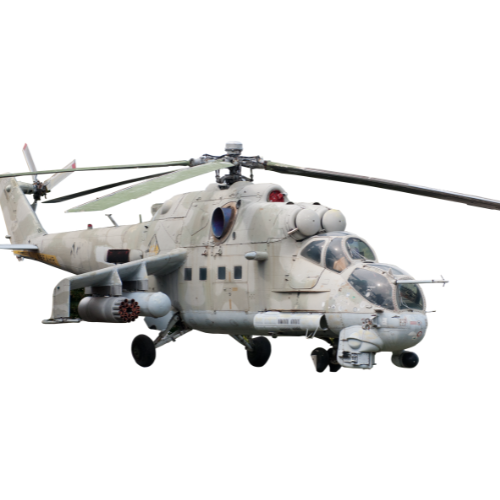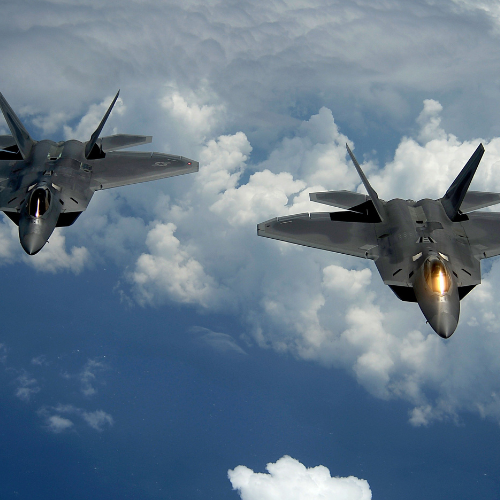In the event of an American conflict in the future, the soldiers commanding the latest war machines will not rely on bulky control boards or science fiction touch screens. Instead, they will make use of gadgets that will be very similar to those designed for Xbox or PlayStation video game consoles.
In recent years, the US Defense Department has slowly started incorporating what seem to be the handsets of the Freedom of Movement Control Unit (FMCU) technology for use in complex weapon systems as the dominant control systems, as observed in public guidelines and imagery made available through the department’s Defense Visual Information Distribution System media center.

Among these systems we can find the newly introduced launcher of the Navy Marine Corps Expeditionary Ship Interdiction System (NMESIS) which is an anti-ship missile system mounted on a Joint Light Tactical Vehicle. This vehicle is designed to fire the new Naval Strike Missile, which is critical to the future plans of the Marine Corps, which is a hypothetical war with China in the Indo Pacific. The Army’s newest system, Maneuver-Short Range Air Defense (MSHORAD) consists of Stryker infantry fighting vehicles equipped with FIM-92 Stinger missiles, precision AGM-114 Hellfire missiles, and the 30-mm chain gun, which is anticipated to provide air dominance in case of aggression from Russia in Eastern Europe. And other examples are the American Air Forces’ Recovery of Air Bases Denied by Ordnance (RADBO) truck on MRAP configuration which works to remove improvised explosive devices, unexploded ordnance, and hidden ordnance using a laser and the testing phase of HELEX which is a high energy laser mounted on a humvee that is being tested in the Marine Corps.
According to a Navy contract of 2023, the FMCU will also be responsible for the functioning of the AN/SAY-3A Electro-Optic Sensor System (“I-Stalker”), which is aimed to assist in tracking and hitting adversaries upon the service’s prospective Constellation-Class guided missile frigates. Since 2008, the Flight Management Control Unit, manufactured by Measurement Systems Inc. (MSI) – a British defense firm Ultra – has its roots in HMIs. The FMCU prides itself on a design that bears a resemblance to an ordinary Xbox or a Play Station controller, albeit a much tougher version designed to protect its delicate components from the hostile environment that American troops may be faced with. Drawing on its history of development of various joysticks for different US naval and aircraft systems, MSI has worked with prime contractors such as General Atomics, Boeing, Lockheed Martin, and BAE Systems, to supply so-called SHCs – Hand Held Control Units for various aircraft and vehicle programs, as states data received from the federal contracting software GovTribe.
“Having the vision to anticipate what form factor the modern soldier would interact with most seamlessly, [Ultra] has also made sure that the FMCU remains one of the… best… controllers in the market that one can actually customize,” claims Ultra. (WIRED made several inquiries to the company about this and the company chose not to answer any of them. )
The highly versatile FMCU is not quite revolutionary in its nature: It has already been claimed by Ultra that the controller has been used since 2010 to control also decommissioned Navy’s MQ-8 Fire Scout UAV as well as Ground Based Operational Surveillance System (GBOSS) of the Army and Marine Corps which whose services were utilized in operations all over the world. However, the one most recent.

An Air Force spokesperson states to WIRED: “When it comes to RADBO, the users are predominately younger.” “This means the need for a PlayStation or Xbox type of controller like the FMCU is a logical progression for this generation that has grown up on gaming.”
It is not surprising in the least that the US military has started latching on to custom made video game styled controllers: Every single branch has played around with the off-the-shelve console handsets for the control of new systems for quit some time. For example, in excess of a decade ago, most units in the Army and Marine Corps spent copious amounts of time using an Xbox controller as a device to control small unmanned vehicles including, but not limited to ground units for explosive ordnance disposal, airborne drones, and larger components such as the M1075 Palletized Loading System logistic vehicle. In contrast, the slim and sleeker device called the “photonics mast,” which is a modern device that has replaced the old time periscope in navel subs of new Virginia class, uses the same cheap Xbox controller as the Multifunctional Automated Repair System Robot used in ships for in-theatre operations focusing on damage repair as well as ship venue repair.
This growing reliance on gaming consoles and peripherals is not uncommon in the case of defense firms too looking to get more business from the Pentagon: One can take a simple example of the BlueHalo LINCOLN system which was essentially designed as the P-HEL system laser weapon integration system for the army, and how it also incorporated an xbox controller as a means of assisting sappers in eliminating enemy drones on the battlefield with laser systems – which is something the army had previously attempted with sappers and laser weapons.
“Games like Halo were ubiquitous in the military; by 2006,” recalled Tom Phelps, who was a product director at iRobot. “Of course, the hoyt controller was very popular here.” This was a Mission Validation Initiative that utilized robots to support the line of contact. “This was the background of the Columbus Project… and it was very positive in its evaluation as younger more combat oriented troops had played a lot of video games and adapted seamlessly.”
The commercial video game controllers have gained import outside the US military. For example, weapons systems from British Army-controlled Polaris MRZR all altogether vehicles to Israel Aerospace Industries’ Carmel division had its weapon controls designed based on input of teenage fans who apparently avoided the conventional military jet stick in favor of a normal game console. More recently, Ukrainian soldiers have utilized popular gaming consoles like the PlayStation and controllers of Steam Decks to operate armed drones and gun turrets against Russian troops. And even these, in fact, the commercial-grade controllers, have some other strange uses as well: Most notably perhaps, in June 2023, the OceanGate submarine that catastrophically imploded during a dive to the Titanic’s wreck was controlled using a modified version of the Logitech F710 gamepad, as reported by CBS News back then.
“Many changes were made to the control functions of the tank’s weapons systems for younger operators because they are more open to such ideas,” Udi Tzur, an Israeli Defense Forces colonel explained to The Washington Post in 2020. “It’s not quite like operating in real time with a console game – it’s similar to using systems like that, and they somehow quickly utilize the competencies gained to actual operations. I’ll be honest, I did not believe it could be done this fast.”
Utilizing inexpensive, video game controller inspired devices to control sophisticated military weapon systems has benefits that are not hard to see. Take control for instance, as one major advantage: game handsets are not only more designed for comfort, but the arrangement of buttons and joysticks allows for the different types of control that touch screen interfaces or even the standard US military touch screens do not provide. This particular lesson was driven home to the Navy following the 2017 collision of the USS John McCain and a commercial vessel in the waters off Singapore, which led the Navy to remove command bridge touch screens from the Destroyer Class fleet and fit mechanical throttles instead after investigations into the collision found that “American sailors generally preferred them – effectively because they provided both immediate and tactile feedback to the operator.” Sure, a service member may not be required to use Xbox controller with a rumble effect for operation, but the design of video-game-like controllers such as FMCU as opposed to dynamic touch screen controllers do in fact provide quite a lot of tactical and tactile benefits, a finding that a few studies seem to back up.
However, as military officials and defense contractors have also observed, the primary benefit of these video-game-style controllers for the Pentagon is how familiar they are to the average American service member. The most recent annual report from the Entertainment Software Association trade group states that in 2024, around 190.6 million Americans of all ages which is approximately 61 percent of the US population are gamers while relevant data from Pew Research Center published in May states that 85 percent of teenagers play video games in America, out of whom 41 percent say they play every day.

According to the ESA study, console devices and their unique control devices are favored the most by Generation Z and Alpha. The two generations are likely to be recruited to fight in the next major war in America. As military innovator Peter W. Singer puts it, “the Pentagon is free-riding”. The free ride is courtesy of a video game market that has for many years been familiarizing American users with specific controls and imaging ergonomics which have more or less not changed since the advent of the elongated grips of the Play station in the mid 90’s (grips that most game systems have since adopted except of course the Wii controller which the army dreamed of using with the explosives eliminating robots almost two decades ago).
“Gaming companies have spent millions of dollars to design a user interface that is optimal, natural, and takes very little time to master. After that, they turned for several years to preparing the US military for using such interface,” Singer said in March 2023. “This is not coincidence in designs, the military is sourcing the same demographic that these companies are using … and the training is pretty much over.”
For now, it remains unknown how many US military systems incorporate the FMCU. When asked, the Pentagon acknowledged the use of the system in NMESIS, M-SHORAD and RADBO weapons platforms and directed WIRED to the respective services for other queries. The Marine Corps verified the handset’s employment with the GBOSS, and the Air Force reiterated the same for the RADBO. The Navy indicated that the service does not currently integrate the FMCU with any operational systems; the Army did not reply to inquiries.
How far the use of FMCU and its commercial off-the-shelf variants will penetrate the ranks of American service men and women is still a question. Morphing from one form of controller into another is a technology that one can see existing for many years: It’s like the joystick (or control column in army terms) is synonymous with military aircraft as they have flown since time in remembrance. Let us just draw the line and believe the Pentagon has not thrown the next revolution into warfare towards a Power Glove scenario.







